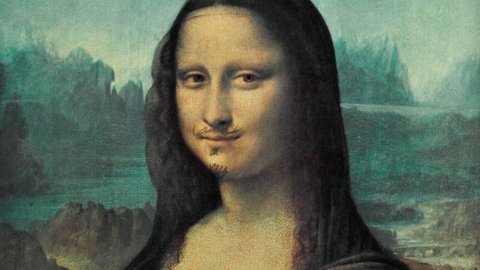The exhibition, organized in collaboration with the Staatliches Museum of Schwerin (Germany), is part of the Swiss celebrations for the 100th anniversary of the birth of the Dada movement, founded in Zurich in 1916. The exhibition presents a selection of the most important and emblematic works by Marcel Duchamp, alongside those of the major exponents of Fluxus.
In 2016, Switzerland celebrates the 100th anniversary of the Dada movement, which was founded in Zurich in the now legendary Cabaret Voltaire. In 1916, reacting to the events of the First World War, the Dadaists attacked the false values of bourgeois progress, the certainties and established systems, breaking with any rational scheme. Also in the artistic field, they worked to demolish the existing canons, subverting the hierarchical norms and the barriers that had existed until then between literature, theatre, music and the fine arts.
The exhibition presents a selection of the most important or emblematic works by Marcel Duchamp, a personality who had a great influence on the avant-gardes that developed between the two wars, to the point of becoming the new "Michelangelo of modern art", the forerunner and inspirer of most of the movements that have come down to the present day: from Pop art to conceptual art, from Fluxus to Net and Mail art.
The exhibition itinerary will revolve around the famous manipulation of Leonardo da Vinci's Mona Lisa with a beard and mustache – one of the funniest and most desecrating ready-mades of Duchamp's production – transformed into a Dadaist portrait. To this are added other equally significant creations, from the famous Nu descendant un escalier (1911/1937) to the first ready-mades such as The Comb (1916/1964), to later ones such as the Tabliers de la blanchisseuse (Laundress's Aprons) by 1959.
Alongside these works alternate the works of the artists of Fluxus, a neo-Dadaist movement established in 1962 but already operating in the late 1950s, also thanks to the intermediation of Duchamp. The exhibition brings together 11 adepts of the group, from its promoter Georges Maciunas, represented here with the Stomac Anatomy Apron silkscreen, to Nam June Paik, Ben Patterson, Dick Higgins, Philip Corner, Daniel Spoerri, Ben Vautier, and others.
As for Duchamp, also for the exponents of Fluxus a sense of humor and play become essential strategies for undermining visual and thought patterns consolidated by culture and commonplace: their works encroach on different fields of artistic work, contaminating thanks to the eclectic fusion of several artistic codes. Characteristics that manifest themselves particularly clearly in Al Hansen (pioneer of performance and happening art), in his well-known series of collages inspired by the image of Venus, such as the Streichholz Venus of 1992, composed of matches, or the Zoo Venus from 1995, made with an assembly of plastic animals.
Thus Geoffrey Hendricks' Fluxus Altar associates its apparently romantic images of the sky with objects and furniture installed in the surrounding space. Even Duchamp's famous boîtes are revived in new variations, in the collective assemblage of the Fluxus Virus Box (1992), in Emmet Williams' Self-Portrait box (1986) and in Robert Filliou's Optimistic Boxes, indicating how much thought and action by Duchamp are still alive and current.





